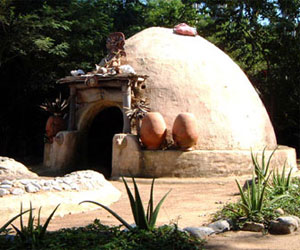 |
|
|||
|
| ||||
Indian temazcal
The ancient Indian word "Temazcal" is composed of two roots: "theme" - wash, and the "calcium" - the house. That is, it turns out - a home for washing. There is another interpretation of the name Temazcal - "House of hot stones." At the time temazkals were so common that they can be seen as a wealthy nobleman's house, and at the hut of the poorest beggar. However, with the arrival of the Spaniards, they universally banned, as in the Temazcal bath without clothes (which is natural for the modern man) was totally unacceptable to the Europeans' perception of the time. And yet, despite the ban, after a while temazkals went back into the everyday life of Indians. What is the Indian Temazcal? Room for Temazcal – is sweat bath, built of mud bricks, with a mixture of straw and dried in the sun. The room itself had two little room: one for heating the oven (with vents in the ceiling), and one for sweating. These little rooms are connected by small bore through which you can only crawl on all fours. After the melting furnace, the heat transferred from it to the walls of the room for bathing. Bather got pairs spraying water on them. The temperature of the vapor is relatively low - about 50 degrees Celsius. If you would like to get hotter steam, then the sweating-room was recorded volcanic rocks from the furnace and water was sprayed on them. After sweating Indians washed with soap and a washcloth from the grass, watering from the previously prepared a pitcher of warm water. By the way, the rich Indian aristocracy sometimes held special bathhouse attendants who assisted bathing. And besides these bathers are often chosen from people with physical defects: dwarfs or hunchbacks. Temazkals in their original form still widely used among the peoples of Mexico. | |||||||
|
|||||||